 |
 |
 |
| |
An exploratory assessment of the feasibility and acceptability of home-based support to streamline HIV pre-exposure prophylaxis (PrEP) delivery
|
| |
| |
Reported by Jules Levin
Durban 2016 July 18-22
Presenter
Aaron Siegler
Authors
A. Siegler1, A. Liu2, K. Mayer3, K. Thure1, R. Fish3, E. Andrew2, M. Gelman3, P. Sullivan1
Institutions
1Emory University, Epidemiology, Atlanta, United States, 2San Francisco Department of Public Health, Bridge HIV, San Francisco, United States, 3The Fenway Institute, Boston, United States
webcast:https://www.youtube.com/watch?v=gAe5CLqj3EQ

For the quarter of patients who rate themselves more likely to stay on PrEP if home care was available, this may be important. For those who face substantial transit burdens, or live in rural areas, this may be particularly helpful.

ABSTRACT
Background: PrEP is highly efficacious in preventing HIV transmission. The US Centers for Disease Control and Prevention, the Southern African HIV Clinicians Society, and the European AIDS Clinical Society recommend quarterly HIV and periodic STI screening for those on PrEP. The burden of indefinite PrEP follow-up visits is high for providers, patients, and the healthcare system. A home-based testing system could greatly streamline PrEP delivery and facilitate rapid scale-up.
Methods: We conducted in-depth interviews and exit surveys in San Francisco, Boston, and Atlanta with 12 medical providers and 16 participants, exploring the acceptability of a PrEP home care system that would be used in lieu of 1-3 of the quarterly provider visits per year. Participants were shown kit mock-ups and self-collected all specimens. Providers were shown laboratory and behavioral results from mock-ups. We discussed with all their interest in, willingness to use, and concerns regarding a home care kit for PrEP. We also conducted a brief exit survey.
Results: Participants and providers had favorable reactions to the kit, with some participants less enthusiastic about home counseling because they felt it unnecessary (Figure). 15/16 participants were able to self-collect all specimens necessary to conduct standard tests for HIV, STI, and renal function. Across specimen collection methods, only 2/16 participants rated any as "difficult" or "very difficult." One representative participant noted, "I would highly encourage this to be out in the world" and a provider noted, "I think it''s great ? we have to decentralize (care)."
Conclusions: There is strong interest in a PrEP home care system from both MSM on PrEP and providers prescribing PrEP. With a mocked-up kit, specimen collection was feasible and largely acceptable. Future research is needed to pilot test the home care kit in an unsupervised setting to determine adequacy of sample collection and acceptability of the overall home care system.
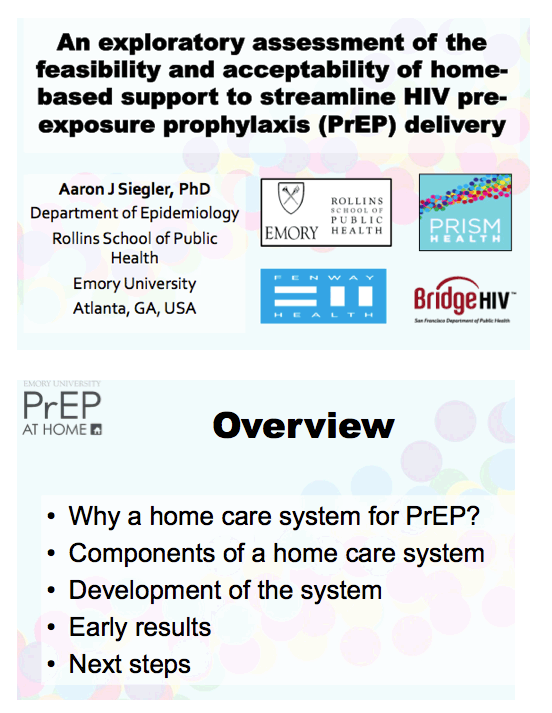
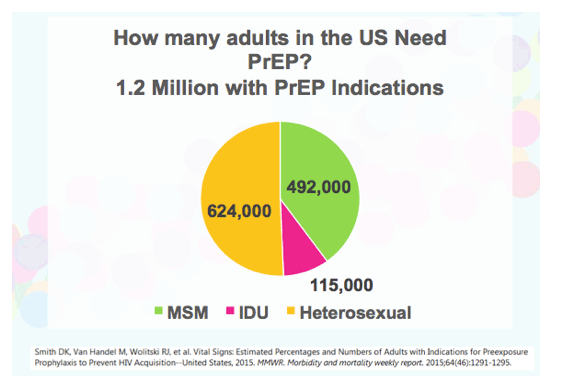
PrEP works. Here are data from a paper by Dr. Sam Jenness. This mathematical model, based on a 10-year time horizon, shows PrEP impact at different levels of adherence (y axis) and scale-up or coverage (x-axis) for MSM based on CDC PrEP indication guidance. For instance, at 60% of persons adhering to PrEP and 40% coverage, you see a 30% of infections averted.
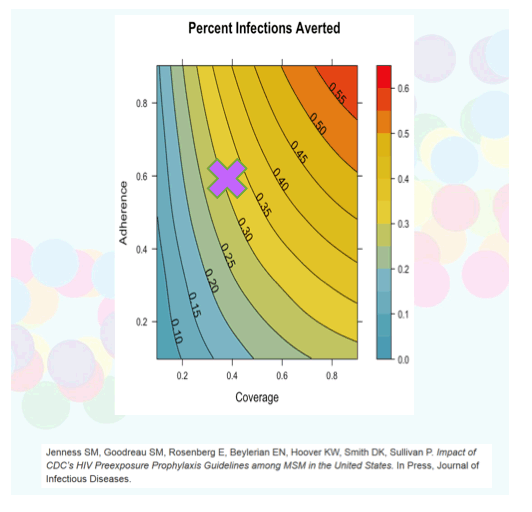
Here are data and a chart from Gilead analysis of electronic national prescription data of tenofovir, excluding non-PrEP uses. The rapid and exponential pace of scale-up is exciting, and indicates the potential for PrEP scale up at a national level. I also would like to note that the same study found PrEP to not be adequately scaling for those most at need, young MSM and Black MSM.
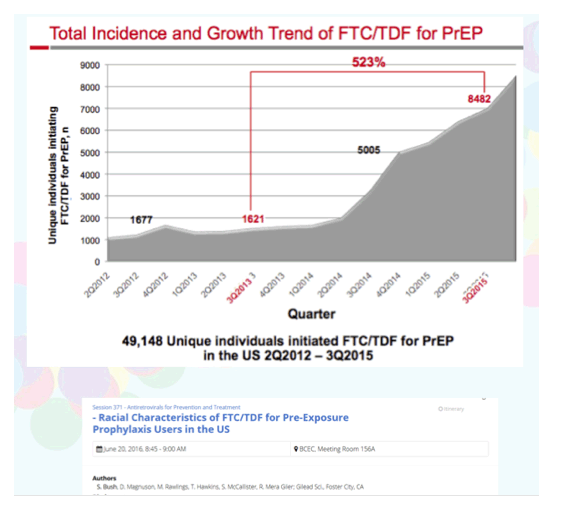
For those on oral PrEP, frequent HIV testing is needed to prevent or limit the risk of ART-drug resistance in the event of
As you might imagine, given the large number of patients eligible for PrEP and the heavy patient visit burden, there are potentially large costs to the process.
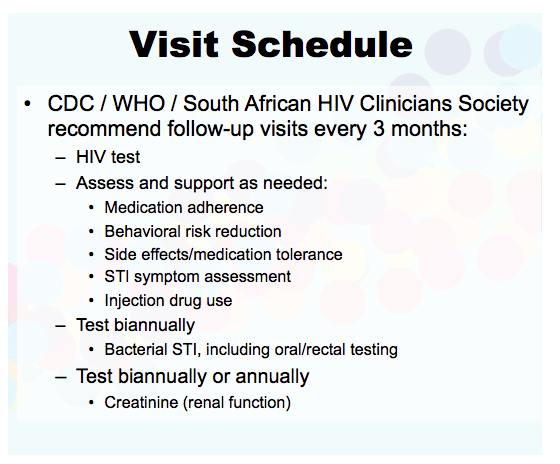
Time and patient burden on left, provider and healthcare system burden on right.
Given these costs, which primarily stem from the large number of follow-up visits, we sought to develop an approach to alleviate the costs of follow-up, which brings us to PrEP@Home
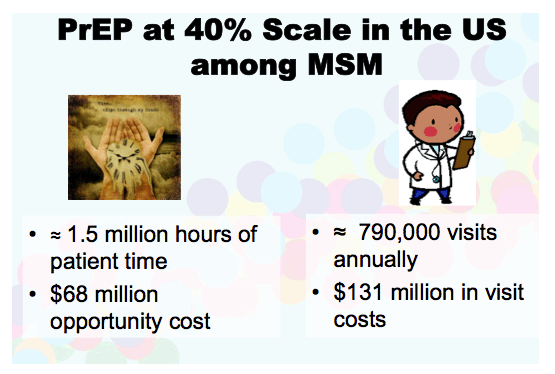
This diagram represents our initial conceptualization of a home care system for PrEP
The concept of PrEP@Home is to supplement current care given by current PrEP providers, potentially alleviating 2 or 3 of the 4 annual provider visits,
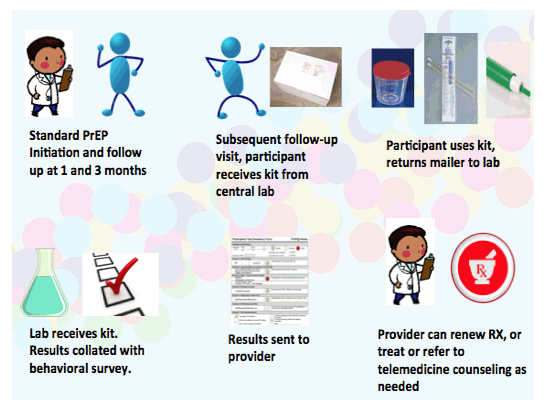
2 phases. In the interviews, we described the PrEP@Home concept to MSM PrEP patients and providers, and sought their input on how to improve the system.
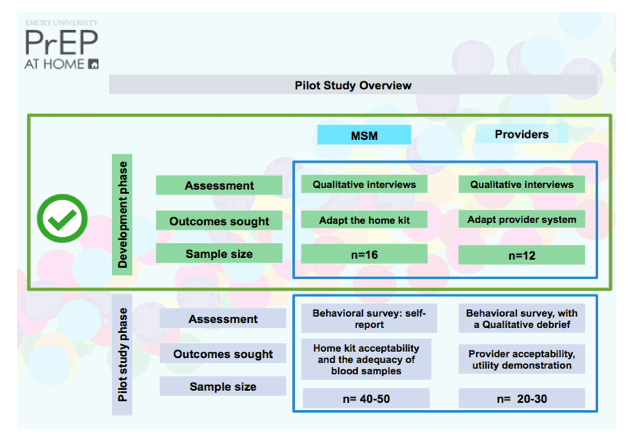
In conducting the interviews with patients, we learned to simplify and clarify instructions. 2 quick examples out of dozens of adjustments: Patients were unsure of what 1.5 inches was, so we used the printed instructions to show the exact length. We also found that participants had trouble inserting the rectal swab, so our lab determined that lubricant can be used for the rectal swab without negatively impacting the validity of the test. We also found that participants wanted visuals to help guide them through the process, so we created an instructional video. This is a dense and heavy topic, that we tried to make light-hearted. So please feel free to laugh, eve if you are only being polite!
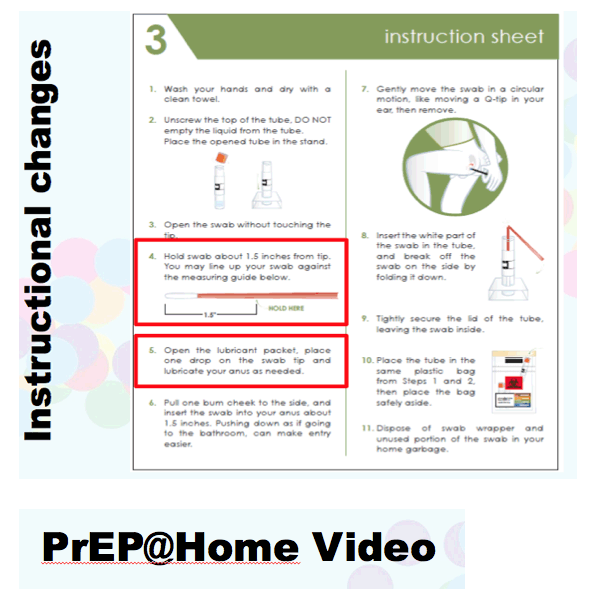
can be viewed on webcast: https://www.youtube.com/watch?v=gAe5CLqj3EQ
We also made changes to optimize the home care system for providers. A few examples
Natural bent researchers, ask 10, 20, maybe thrity items regarding drug and alcohol use. Providers are more efficient, requesting a single item. Outputs be reported in commonly used metrics in electronic med records systems.
Here is a sample cover sheet to be sent to providers, Mr Doe. We used a green/yellow/red system, with green meaning no provider action required, yellow meaning provider action at their discretion, and red indicating required provider action.
Telephone adherence counseling
We also had patients complete the self-collection procedures for each specimen. About half of participants rated finger prick blood collection as a little difficult or not at all difficult, with the remainder reporting largely as moderate difficulty.
Not surprisingly, participants found swab and urine collection procedures less difficult, with ¾ rating as a little or not at all difficult.
Also asked regarding interest in future use of home care system components. Most providers were extremely interested in using the Home HIV/STI system component with patients, and there was higher support for home counseling. Conversely, most patients were interested in the home HIV/STI testing, but only about half expressed being somewhat or extremely interested in home counseling. Qualitative context informative, with most participants indicating that they had enough counseling, having been tested for HIV and counseled numerous times previously.
Qualitatively, providers tended to be positive , noting
Patients were also largely positive,
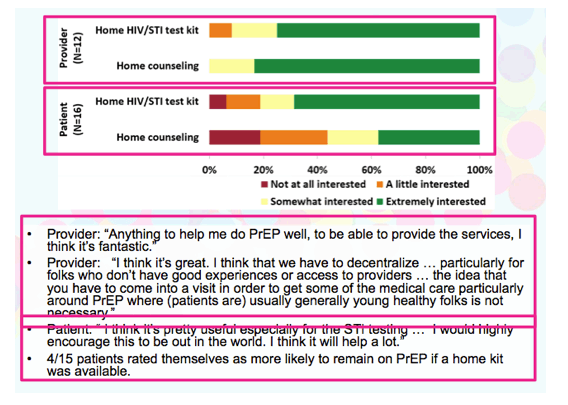
HealthMindr is a comprehensive HIV prevention smartphone app, with functionality that includes screening for PrEP eligibility.
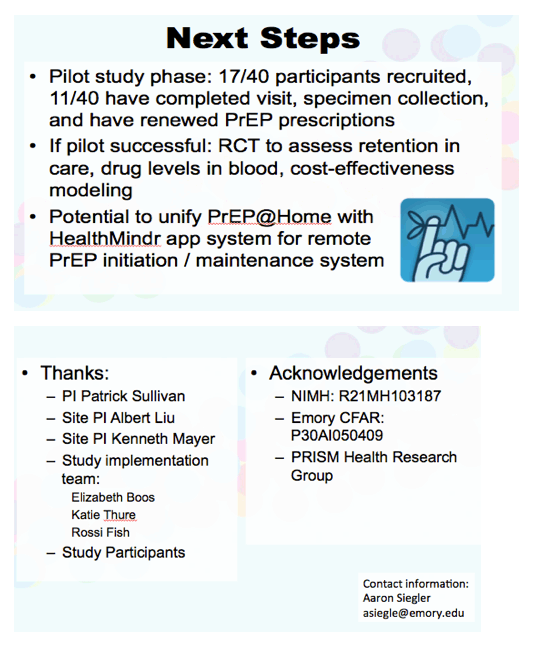
|
| |
|
 |
 |
|
|